Great Reads in Photography: September 19, 2021
![]()
Every Sunday, we bring together a collection of easy-reading articles from analytical to how-to to photo features in no particular order that did not make our regular daily coverage. Enjoy!
With Baby Animals, Patience Pays: Photographer Describes New Book of Intimate Portraits – Mongabay
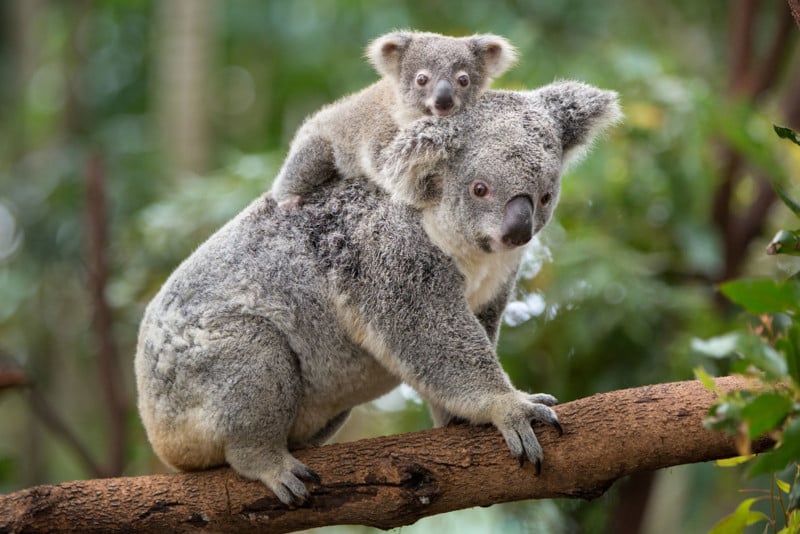
Suzi Eszterhas was recently named Outstanding Nature Photographer of the Year by the North American Nature Photography Association. Her latest book New on Earth: Baby Animals in the Wild, showcases her specialty of photographing wild animal babies.
Eszterhas’ images have graced over 100 covers from TIME to Smithsonian, BBC Wildlife, The New York Times, and Ranger Rick. She has 21 books in print, including in French and Japanese, and another three in the works.
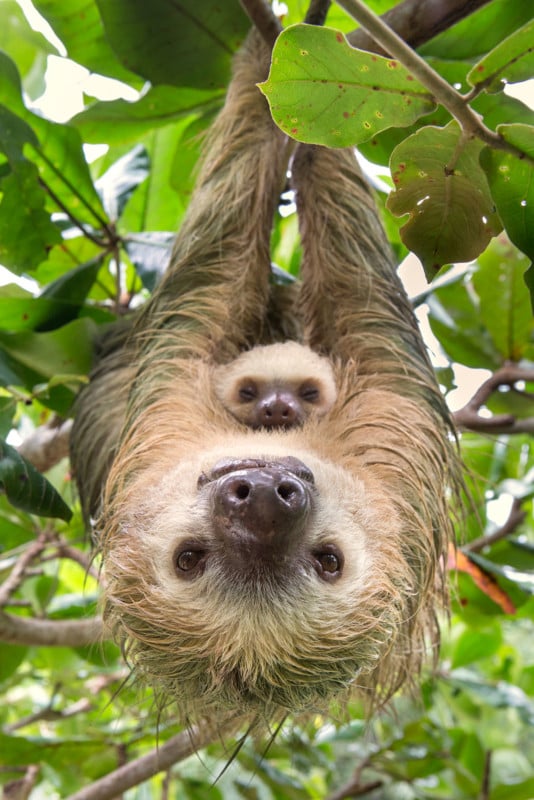
She has hugged a baby whale, swam with sloths, fended off curious grizzly bears, had hyenas chew on her engine, had insects lay eggs in her feet, has been chased by a green mamba, and hand-raised and released an orphaned serval, a North African wild cat
5-Minute Sunday Interview
Phil Mistry: What is the secret to getting intimate photos of mothers and babies in the wild?
Suzi Eszterhas: Photography isn’t the hard part. It’s the respectful connection with an animal that is the real work. Nearly all animals with newborns can be wary and on high alert. You must try and understand what you might do (or not do) to make the mother feel safe.
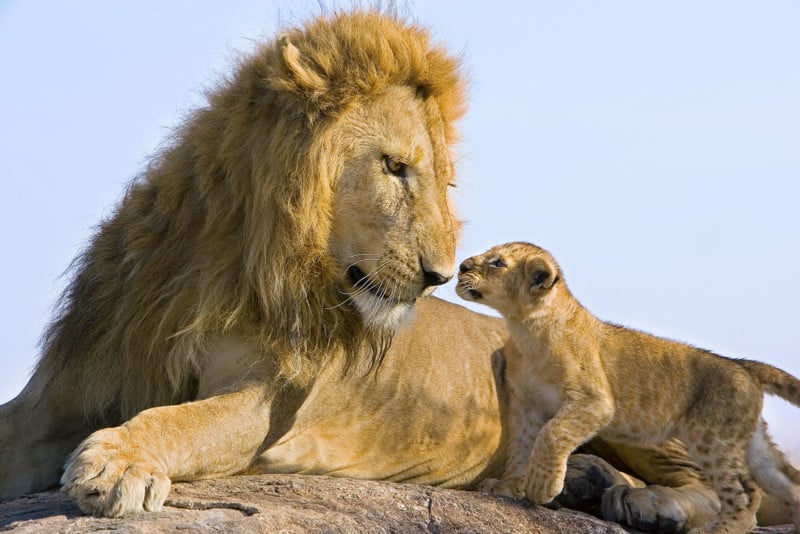
This cannot be undertaken on a brief holiday safari. It can take weeks or months of working from sunrise to sunset. My goal is to cultivate a presence where the animal is so relaxed around me that they may not even care that I am there. I just become a piece of the landscape—a part of their habitat.
PM: What attracts you to animal babies?
SE: In a word, they are irresistibly cute. Cute has incredible power to arouse compassion and love.
Nothing gives me greater pleasure than knowing that my imagery can inspire someone to love and take action, care for our planet, or help save an endangered species.
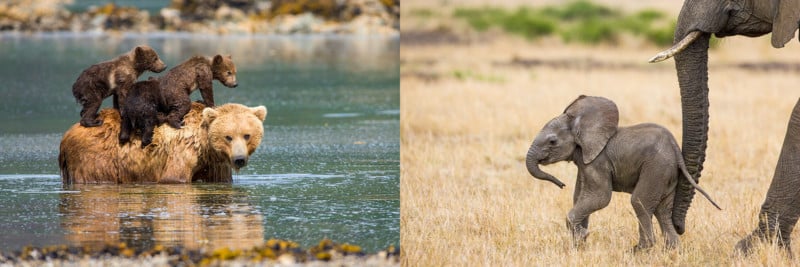
PM: In the last 24 years, you are only the second woman named Outstanding Nature Photographer of the Year. Why is there a shortage of women in the field of wildlife photography?
SE: There is actually no smoking gun. There are a number of reasons why there are so few professional female wildlife photographers. Some of the reasons include: sexism in the industry, the lack of female role models, gear being marketed to men, cultural beliefs about parental responsibilities, personal safety issues, and the highly competitive nature of this field. The non-profit that I founded in 2017, Girls Who Click, is working hard to change this.
PM: What were a few of your scary moments?
SE: Sadly, most of them involve humans rather than wild animals. I once was grabbed off the street and thrown into a vehicle but fought my way out of it and managed to get away. And in Africa, I had a group of drunk rangers show up at midnight and try to arrest me for “poaching.” As a woman often working alone, I always have to consider personal safety issues.
PM: What is your gear?
SE: I shoot a Canon 1DX Mark III and a variety of different lenses, everything from a fisheye to the Canon EF 800mm f/5.6L IS USM. I am also a huge fan of Mindshift’s First Light bags.
PM: What is your favorite place (or region) to shoot in?
SE: Africa. When I was little, I literally dreamed of living in Africa in a tent. I did this for years as an adult, and to this day, I go to Africa a few times a year. People say Africa gets in your blood, and I believe this is true. For me, it is a wildlife paradise. Still, I also think this must be tied to our evolutionary connection to the continent because many, many travelers will feel this way even after just one trip to Africa. In the photo tours, I lead to Africa, I see this happen all the time with my clients.
PM: Any other thoughts?
SE: I truly believe that this job is more than collecting pretty pictures and that wildlife photographers have a responsibility to use their imagery to create change. One of the few things that I am truly proud of in my life is the work I have done for conservation. I use my imagery to raise awareness and funds for a handful of non-profits I have chosen to partner with, like the Sloth Conservation Foundation, Sumatran Orangutan Society and Wildlife Conservation Network. Over the years, through direct sales of my books, prints, and photo tours, I have managed to raise over $200,000 for conservation. A large portion of the proceeds of New on Earth published by Insight Editions goes to the Wildlife Conservation Network.
Roger’s* Recommended Reading
![]()
*Dr. Roger Cicala is an anesthesiologist (yes, he’s an MD), a photo enthusiast, and the founder of Lens Rentals, but these days you are more likely to find him on a beach.
Editor’s note: If you want to recommend your reading list (current or old articles), email it to us and we’ll also link it to your site.
Félix Nadar: The World’s First Celebrity Photographer — BBC
A nice presentation of Nadar, who was the first great marketer in photography, and a whole lot more.
The Making of a Daguerreotype — Daguerreian Society
Warning: Do not use this brochure to actually attempt the making of a daguerreotype. The chemical procedure is far too dangerous for the incomplete information provided here.
And Edgerton Said, “Let There Be Light.” – LensRentals
Fun with Color Vision — LensRentals
Six Optical Aberrations That Could be Impacting Your Vision System — Teledyne Lumenera
9/11 Changed Me | Opinion – NJ.com
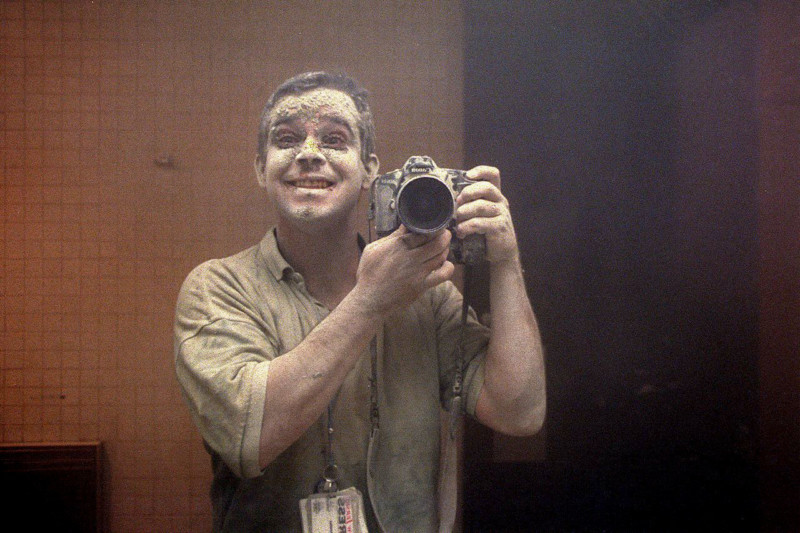
Aristide Economopoulos writes in NJ.com:
When I look at the photos taken that day, they still bother me. Clearly, it’s because your brain wants to push out traumatic events to protect you. There’s a photo of me running taken by Joe Tabacca, and it’s hard to believe it’s me. It looks like a movie still from some bad action movie.
In my self-portrait, I don’t recognize myself. It is clearly me, but I see someone who is numb, nervous, scared and happy to still be alive at the same time. I was across the street from the North Tower when it started to fall, and if it wasn’t for a big bus parked nearby where Joe and I dove next to, we would have been killed.
Amon Carter Museum Acquires Expansive Collection of Finis Welch — Patron
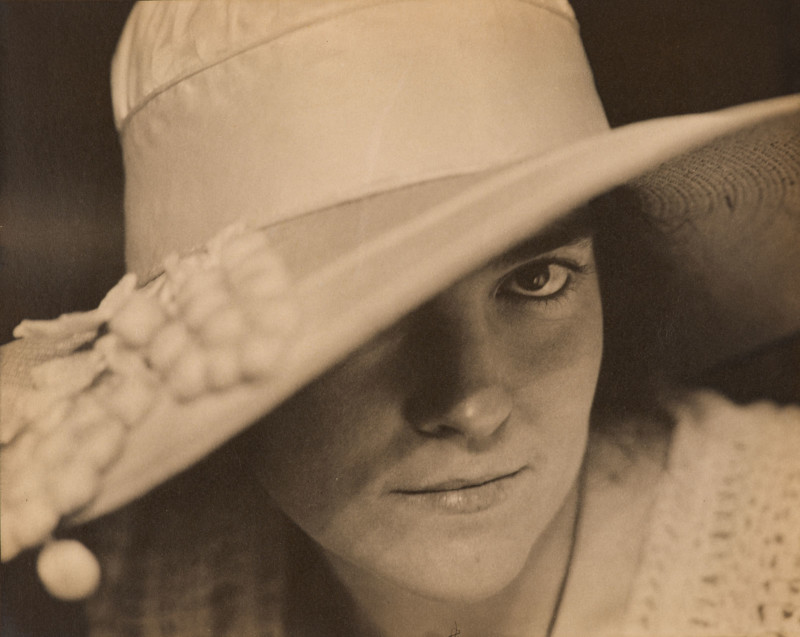
The Amon Carter Museum of American Art (the Carter) has acquired more than 240 photographs from collector Finis Welch, who passed away in 2020. The gift includes prints by Ansel Adams, Edward Steichen, Alfred Stieglitz, Paul Strand, Edward Weston, and more, which significantly strengthen the Carter’s ability to tell the story of early photographic modernism in America.

The bequest features ten rare vintage works by Paul Outerbridge and a unique 10-print set of Aaron Siskind’s heralded series Pleasures and Terrors of Levitation, as well as key works by Walker Evans, Dorothea Lange, and William Eggleston—including some of the rarest and important examples of his photographs, which transform the Carter into a resource for Eggleston scholarship.
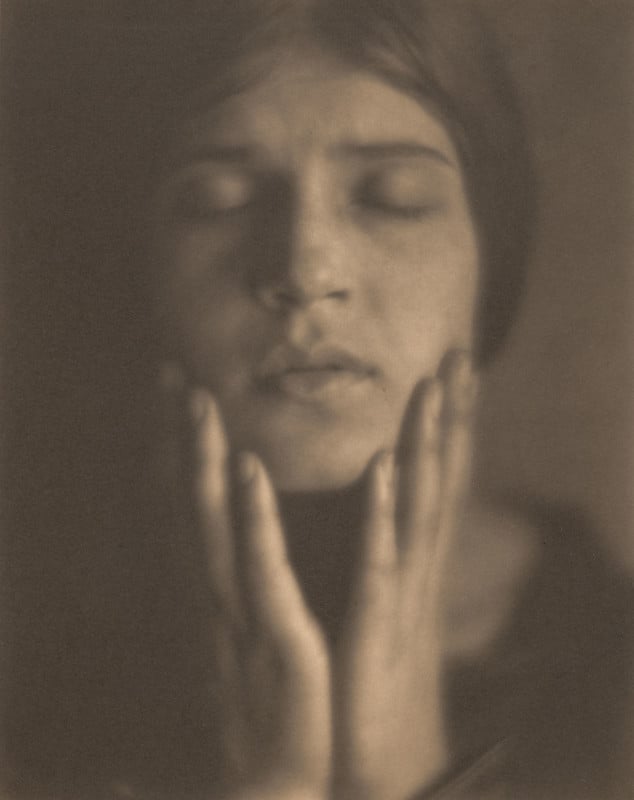
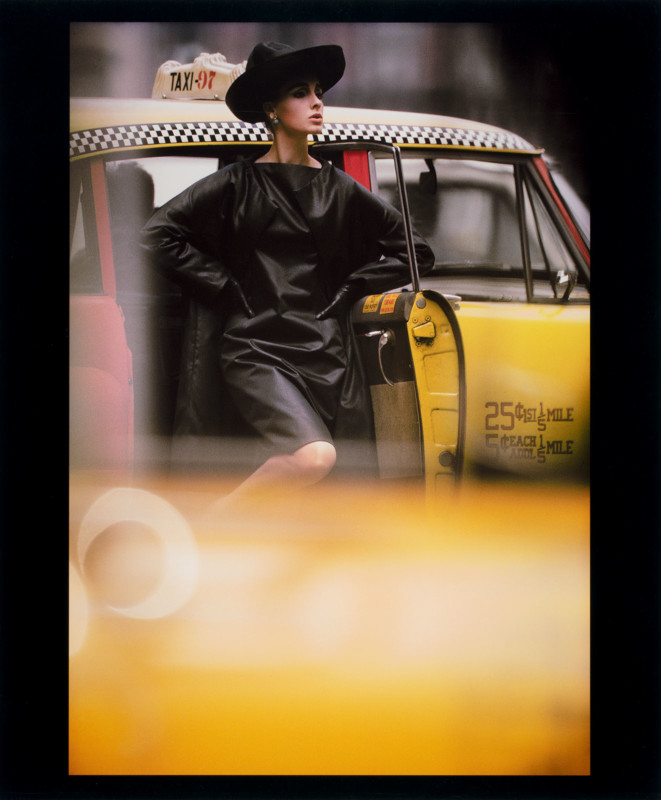
Conceptual works by Marco Breuer, Chris McCaw, and Alison Rossiter are the first works by these artists to enter the Carter’s collection. Works by Edward Burtynsky, Mitch Epstein, and Richard Misrach expand the Carter’s premier collection of American landscape photography.
The Awe-Inspiring Drone Photography of Gary Cummins – DroneDJ
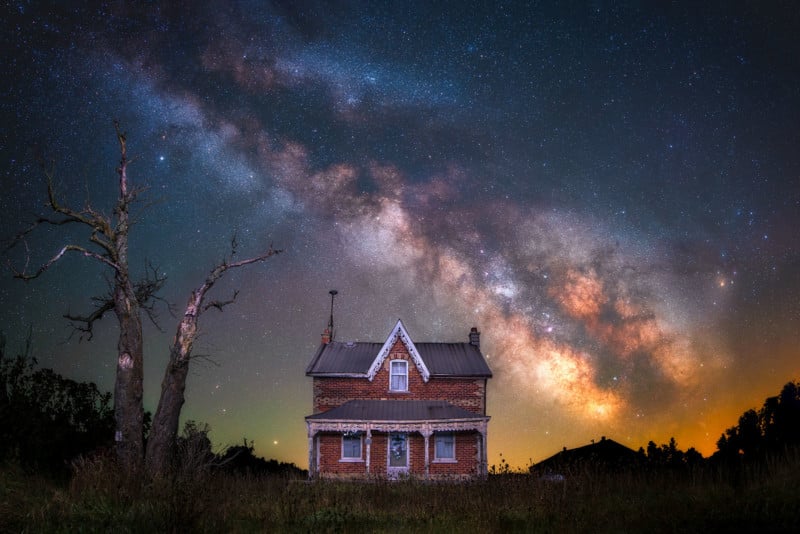
Gary Cummins combines milky way photos with abandoned houses.

“We introduce lots of noise in our images in astrophotography shoots, and I’ve been trying to find new ways of eliminating that,” Cummins describes his technical aspects to DroneDJ. “So, I started light painting old houses and barns with my drone. This allowed me to shoot with much lower ISO settings and get cleaner images all around.
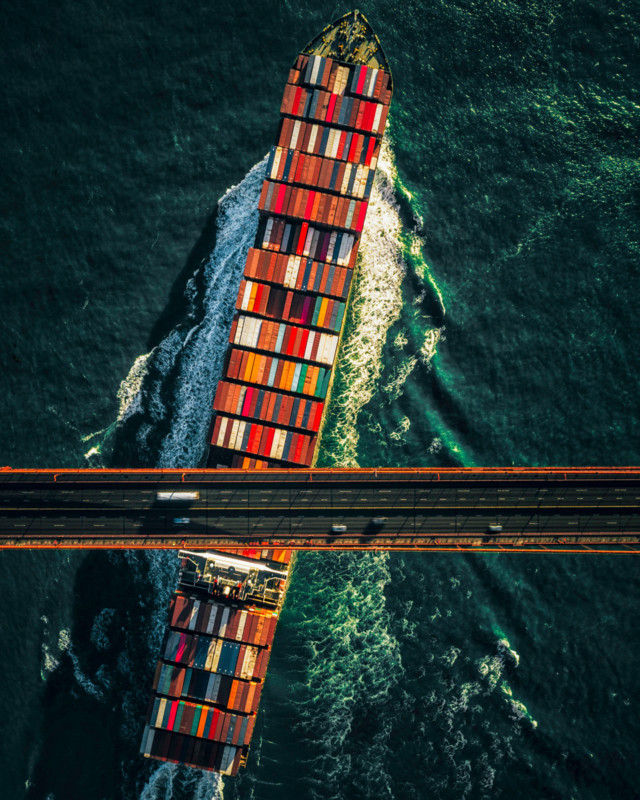
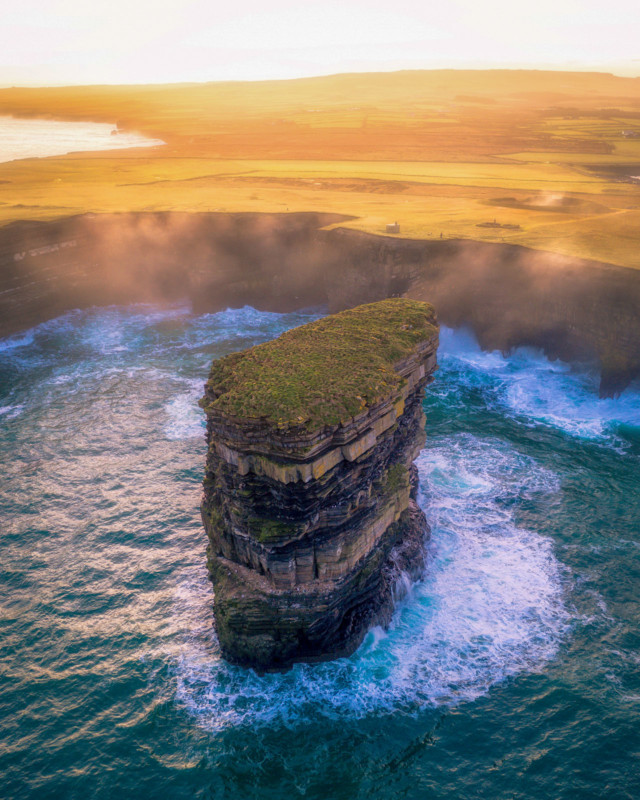
“It does come with its hazards, though. Flying at night can be tricky as the drone’s sensors cannot see, and it’s also tricky flying around trees.”
Disclaimer: We are not endorsing these techniques, and please keep your drone flying compliant with local laws.
The Celebrity Photographer Who Refuses to Photoshop Movie Icons — CNN
Celebrity British portrait photographer Andy Gotts works with an analog camera and no crew. His portraits are never retouched, unveiling actors’ “facescapes” with all their wrinkles, blemishes and smiles. It’s a style that has remained essentially unchanged since he first started.
“If you see a pimple on someone’s head, or a hair out of place — that’s because that’s how they were, sitting in front of me,” Gotts tells CNN. “I was capturing that moment when they sat down with me for our conversation.”
Black Lives in the American South – in Pictures – The Guardian
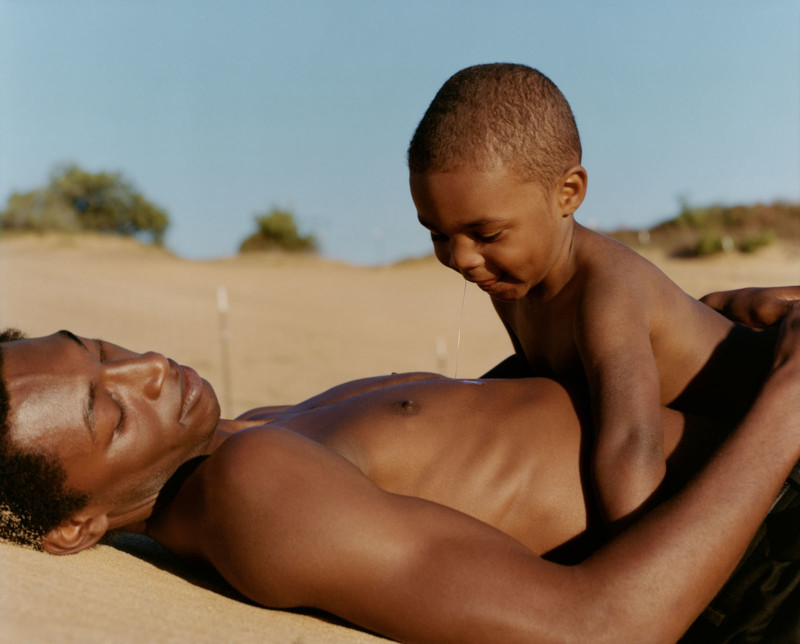
Tyler Mitchell’s imagery visualizes scenes of peace, solitude and belonging for Black people in the pastoral American South. Mitchell makes images that explore the histories of intimacy and meanings of home within Black communities.
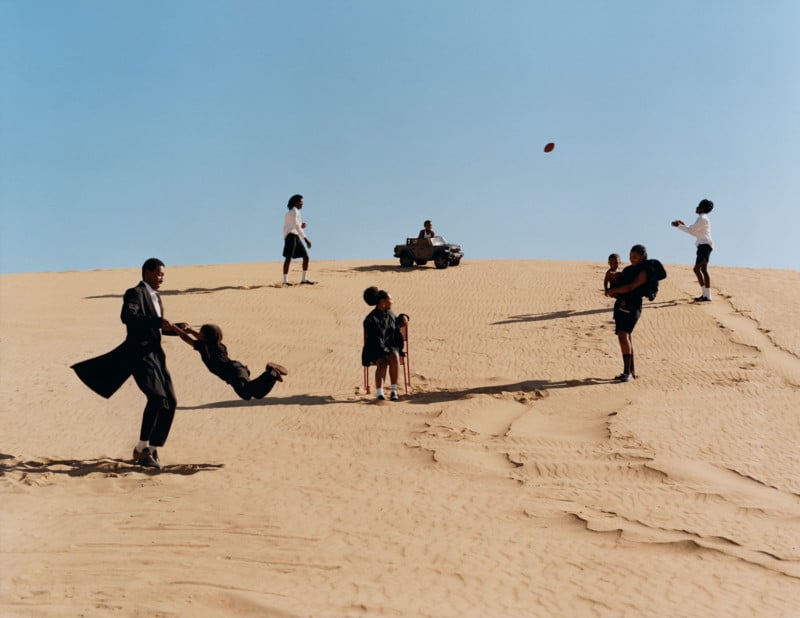
During the beginning of the Covid-19 pandemic, Mitchell could not see his family in his native state of Georgia. The distance and isolation led him to start dreaming of home. When he was able to return, he created new images of subjects in the Atlanta metro area that consider historical and contemporary notions of refuge, repose, and rootedness.
Dreaming in Real Time and I Can Make You Feel Good are on view at Jack Shainman Gallery till Oct. 30.
Canon EOS R3 vs. Canon EOS R5: 9 Key Differences Between the Mirrorless Beasts – TechRadar
![]()
1.) Sensor: a new stacked chip takes the Canon EOS R3’s speed up a notch
2.) Connectivity: the R3 offers super-fast transmission for the professional user
Check the link above for seven more differences and complete details.
Dan Winters (The Most COMPLETE Photographer Since Irving Penn?)
Read also: Dan Winters Gives an Emotional Talk on Shooting the Final Space Shuttle Launches
To Remember the Moment, Try Taking Fewer Photos — NPR

Snapping too many pictures could actually harm the brain’s ability to retain memories, says Elizabeth Loftus, a psychological science professor at the University of California, Irvine. So, you get the photo, but kind of lose the memory.
“When people rely on technology to remember something for them, they’re essentially outsourcing their memory,” Linda Henkel, a psychology professor at Fairfield University, tells NPR. “They know their camera is capturing that moment for them, so they don’t pay full attention to it in a way that might help them remember.”
A Photographer Gives an Inside Look at the Fall of Kabul, her Longtime Home – National Geographic
Photographer Kiana Hayeri has lived in Kabul for the past seven years. For National Geographic, she chronicled the changes across Afghanistan as a generation born under relative freedom faces a future under Taliban control.
Kabul is her home. But on Sunday, August 15, the day the Taliban seized Kabul, and the Afghan government fell, Hayeri had to evacuate as women in the country faced an uncertain future under the Taliban.
The Fifth Corner: Expanding the Frame – Magnum
Fred Ritchin, Dean Emeritus of the International Center of Photography, on this era of uncertainty “when the contributions of image-makers may have little impact or serve primarily to confuse and further fracture the social fabric.”
The Metropolitan Museum of Art will sell 219 prints and photographs to help plug a $150 million revenue shortfall resulting from the pandemic.
What are the Legal Rights of Deceased Black Americans – The Atlantic
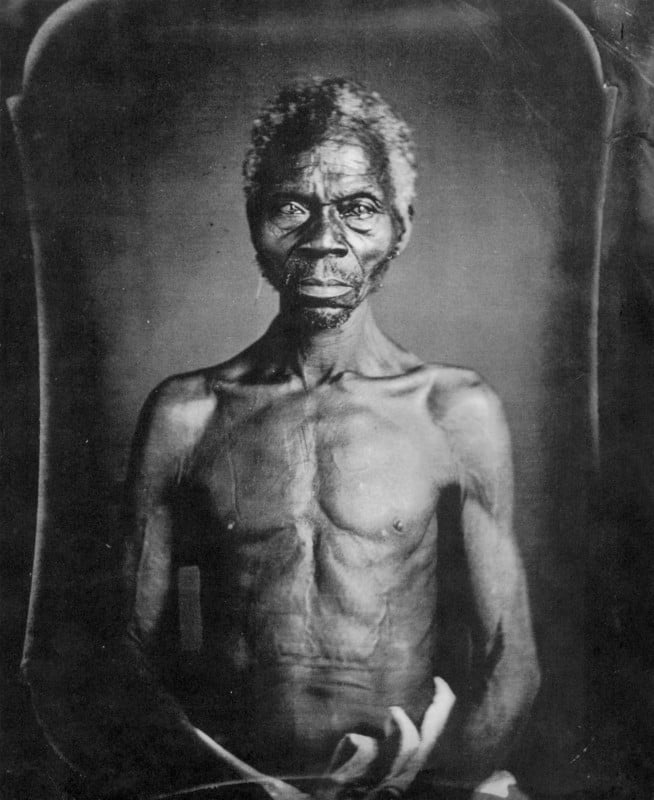
This fall, the Massachusetts Supreme Court will hear arguments in a case against Harvard over its ownership of two 1850 daguerreotypes of enslaved people.
Tamara Lanier believes that the two people in the playing card-sized daguerreotypes held by Harvard University are her great-great-great-grandfather and his daughter.
Read also:
Judge Rules Images of Enslaved Are Property of Harvard, Not Descendant
Who Should Own Photos of Enslaved People?
Harvard Sued Over Profiting from Its Earliest Slave Photos from 1850
AI’ Deep Nostalgia’ Images Have Deep Limitations
Joke of the Week
A press photographer is assigned to cover wildfires. However, the thick smoke was staying close to the ground, so he could not get any decent photos.
The photographer calls his assignment editor and asks him to rent a plane for just 30 minutes. He soon receives a confirmation that a small Cessna is waiting for him at a rural airport 10 miles away and that he should hurry.
On arriving at the airport, the photographer spots the plane waiting for him with the propeller whirring. He jumps in and tells the pilot to take off immediately in the direction he is pointing. When they are directly above the fires, he tells the pilot to fly first east-west and then north-south and then circle the area for the next 20 minutes.
The pilot seems very confused at this instruction and asks, coughing from the smoke, “Why are we doing this?”
“Cause, I’m a Press Photographer, and I need to get a good cover photo of the damage for tomorrow’s paper,” replies the photographer while busily looking through the viewfinder.
The pilot is dead silent for five seconds and then stammers, “So, er, you… you are not the flight instructor?”
Photo of the Week
Great Read from the Past – 2014
Cartier-Bresson’s Classic is Back – but his Decisive Moment has Passed – The Guardian
It’s the book that changed photography forever. But why republish The Decisive Moment after 62 years, when it cements such out-of-date ideas?
Quiz of the Week
1.) Which was the first portable flash to offer HSS (High-speed sync)? Hint: It was way back in 1992 and was made for film cameras by a camera manufacturer.
2.) Canon was the first to use a CMOS sensor in the full frame 1Ds in Sep. 2002. The debut of the Nikon D3 and Sony a700 in mid-2007 firmly cemented CMOS as the dominant technology for photographic cameras — not surprisingly, this same year, CMOS sales surpassed CCD sales. When did the CMOS sensor arrive in the medium format world?
3.) According to Canon: The first full-frame, back-illuminated stacked CMOS image sensor in the EOS R3 will deliver substantially faster read-out speeds and produce much lower __________ distortion than previous EOS models.
4.) Which of the new iPhone 13 models have sensor-shift optical image stabilization (OIS)?
Answers
1.) Nikon SB-25
2.) Hasselblad H5D-50c in 2014
3.) “rolling shutter”
4.) All of them
Why I Like This Photo — Peter Cavanagh
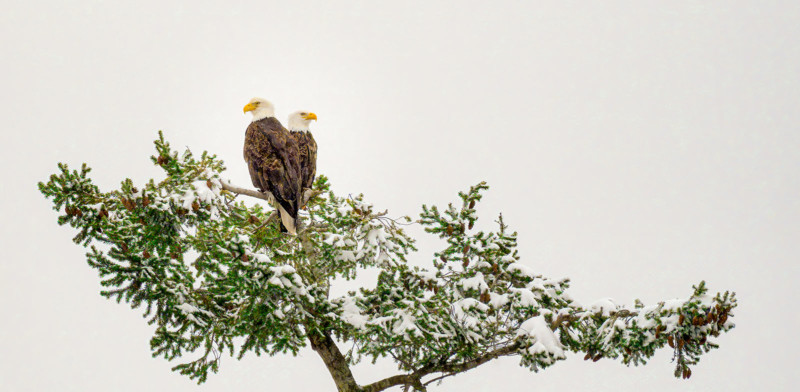
I like this photo because these birds are my neighbors having an unusual day. Over the last several years, I have taken hundreds of images of this pair of bald eagles. In all this time, there has never been a really significant snowfall on Lopez Island, Washington, in the Salish Sea where I live.
On February 13, 2021, enough snow fell to make many local roads impassable on this mid-pandemic day. So, I set off on foot in search of an image. I was carrying a micro four thirds mirrorless Olympus OMD M1X with an Olympus M. Zuiko ED 300mm F/4.0 IS Pro lens — which gave me a full-frame equivalent of 600mm and a published seven stops of image stabilization. I am actually now a Sony Alpha 1 convert.
I found this pair on the top of a large Douglas fir that was heavy from the constant snowfall. They were surveying the bewildering white landscape, surely wondering why their usual green and brown habitat had changed.
Post-processing was in Topaz DeNoise AI and Lightroom. As I viewed the image on the screen, it became clear that the tree was as much a subject as the birds. The entire span of the upper branch needed to be in the final crop, and this determined the composition. The birds seem like sentinels on a ship moving through a sea of grey; one looking east, the other west in reflected symmetry. To escape the sea of grey, the viewer’s eye is magnetically drawn to their yellow bills, tools of destruction, symbols of dominance.
The shot was handheld: 1/2500 sec, f/4, ISO 800. The fast shutter speed was in anticipation of a flight shot that didn’t materialize as the birds exited the backside of the tree.
Peter Cavanagh is a Pacific Northwest wildlife photographer and author who can usually be found pointing his lens towards birds. He has been taking photographs since he was a boy of five growing up in England. His recently completed book 100 Flying Birds: A Photographer’s Notebook will be published this year. Cavanagh guest-curated the Exhibit How Birds Fly at the Seattle Museum of Flight.
Quote of the Week
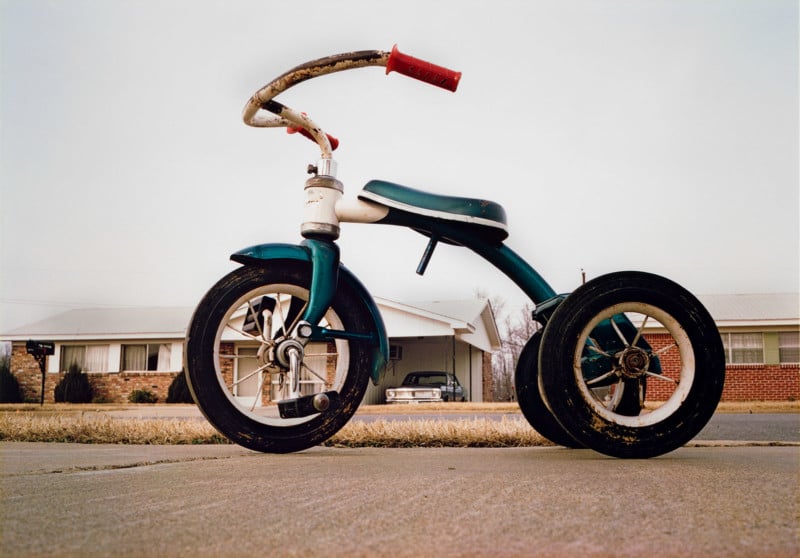
It quickly came to be that I grew interested in photographing whatever was there wherever I happened to be. For any reason.* – William Eggelston
From an interview in The Guardian, Jul 2004.
“I had an old Canon and a Leica,” he says, “but I didn’t know the first thing about photography. Never learnt it off anybody either. It quickly came to be that I grew interested in photographing whatever was there wherever I happened to be. For any reason.”
To see an archive of past issues of Great Reads in Photography, click here.
We welcome comments as well as suggestions. As we cannot possibly cover each and every source, if you see something interesting in your reading or local newspaper anywhere in the world, kindly forward the link to us here. ALL messages will be personally acknowledged.
About the author: Phil Mistry is a photographer and teacher based in Atlanta, GA. He started one of the first digital camera classes in New York City at The International Center of Photography in the 90s. He was the director and teacher for Sony/Popular Photography magazine’s Digital Days Workshops. You can reach him via email here.
Image credits: All photographs as credited and used with permission from the photographers or agencies. Portions of header photo via Depositphotos, Renty an African slave, subject of Louis Agassiz, 1865, Public domain, via Wikimedia Commons